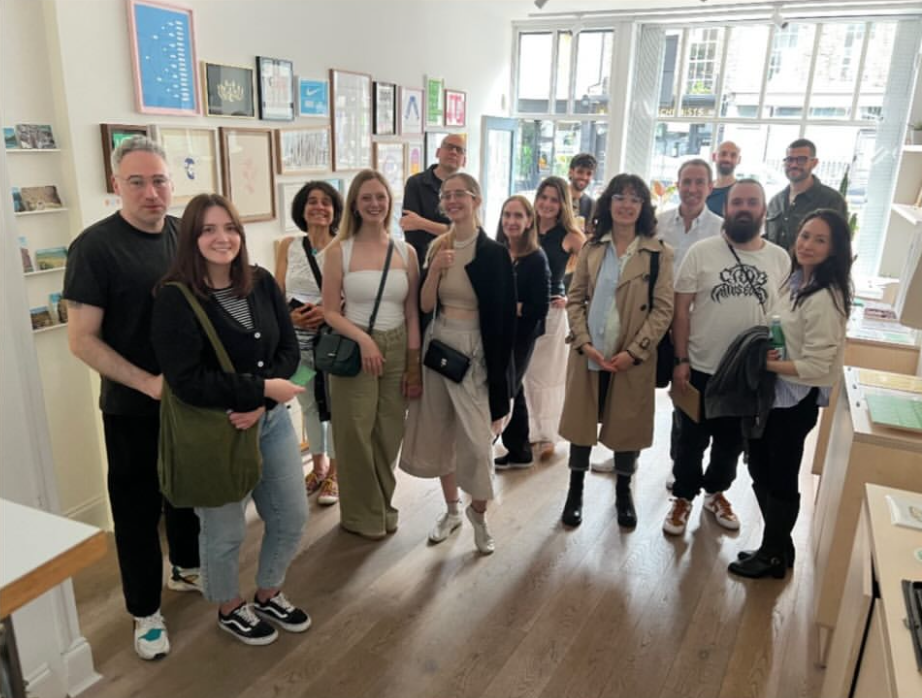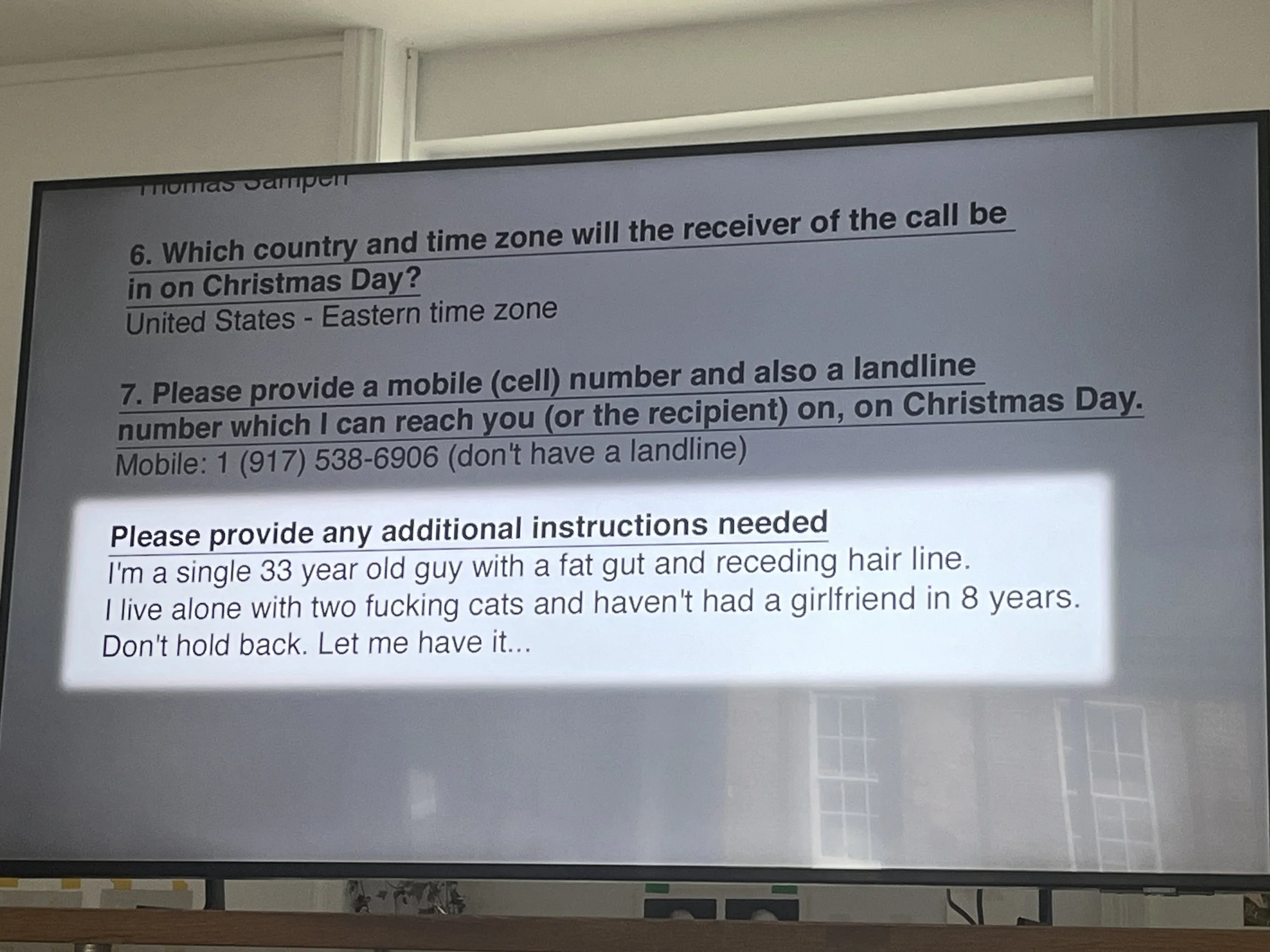Mr. Bingo: How Turning “Hate Mail” into Art Built a Massive Fan Base
Mr. Bingo in his Clerkenwell shop surrounded by his art and adoring fans.
On Saturday afternoon, British artist Mr. Bingo opened up his art studio in Clerkenwell, London to talk about, among other things, sending “hate mail,” why humans like wildly silly things, and how he accidentally became a dominatrix of sorts (had to be there) on the way to building a passionate following — 150,000 Instagram followers, if you’re counting — and launching a successful and growing business selling his art directly to customers.
If that sounds like a lot for one “Creatives & Coffee” talk, trust your gut — it was a lot.
And it was also a lot of fun. The theme of building an audience and selling directly couldn’t be more timely. Given the uncertain job market, new tech tools, and the flattening of corporate orgs that has resulted in widespread layoffs, every creative professional needs to develop their own strong network. A passionate, loyal audience is a critical key that unlocks work sales, new job opportunities, and more.
The event ended at 4:30 p.m., and these attendees were still having a good time one hour later.
Mr. Bingo — who got his nickname after winning a bingo game as a child — was a commercial illustrator for 14 years, working for clients like The New Yorker and The New York Times. Then, in 2012, he did what so many creative professionals dream of doing: he vowed never to work for another commercial client again. From then on, he decided to make the art he wanted to make and let the paying public (sort of) decide his fate.
It’s worked. He’s since developed his own line of successful prints, opened his own shop, and kept his vow with no commercial clients.
Mr. Bingo’s art (above and below) is good for many laughs. Often because it’s true!
One key lesson Bingo shared was that if you want to stand out, you have to do something no one else is doing. (Litmus test: If a corporation does it, the idea is probably not bold enough for an indivdual.)
The “Hate Mail” requests were...something.
As the story goes, Mr. Bingo put himself on the map when he launched “Hate Mail.” Late one night in 2012 he tweeted: “I will send a postcard with an offensive message to the first person who replies.” The response was immediate and overwhelming, with hundreds of people eager to receive these tongue-in-cheek insults. From that one tweet, he launched a service called Hate Mail — a social experiment where people paid to have him send offensive postcards on their behalf.
With three rules (no requests, no preferences about recipients, and no liability for hurt feelings), it became an instant cult hit. Yes, humans are odd creatures.
The “Hate Mail” postcards let people have what they asked for.
At first, Bingo sold them for just five British pounds each, but demand quickly outpaced his ability to produce them. Despite suggestions to scale up, he insisted that each postcard be hand-made by him, making them unique pieces of art rather than mass-produced trinkets. He opened and closed the Hate Mail service multiple times over several years, eventually creating over 1,600 original postcards before calling it quits. Even if the public clamored for more, he believed an artist shouldn’t keep making work they no longer enjoyed.
So what was the morale of the event talk for attendees? To head out and immediately insult someone?
Not exactly. But the spirit of the message was clear: What can you do to make a splash in a noisy digital world?
The sillier and more unexpected, the better your chances of breaking through, just like Mr. Bingo.
***
Sponsored by Adobe, Creatives & Coffee is about going inside a professional’s creative process, exercises, and principles and then applying a new idea to one’s own work through an interactive exercise.
Join more than 30 leaders from top organizations, including Spotify, Disney, Shake Shack, NASA, Cannondale, Hearst, Flatiron Health, Roblox, Clay, Paramount, The Aspen Institute, and Target.







